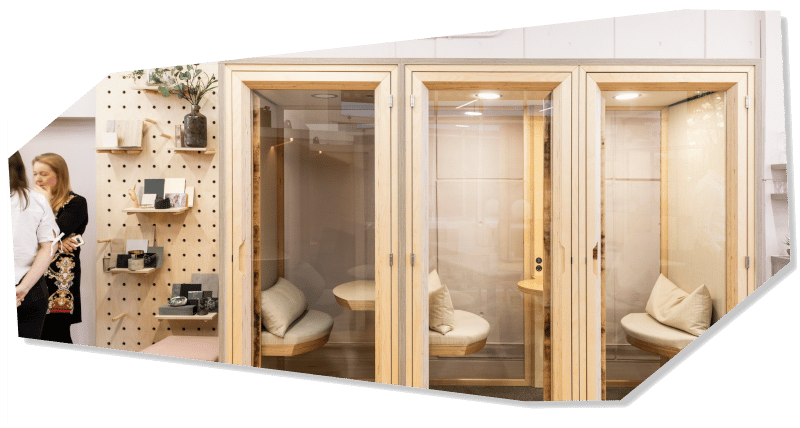Is activity-based working right for you?
Activity-based working is a highly flexible way of optimising your office for its intended purpose. If you’re looking for an enriching office environment that’s been specifically designed for optimal performance and productivity across the wide variety of activities your workforce undertakes in one day, then activity-based working is for you.
Many organisations have already adopted certain models that mimic the key components of activity-based working without realising. While it’s true that this has likely been due to the crucial changes we’ve had to make as the course of the pandemic has evolved, workforces and companies alike have seen plenty of advantages within these changes.
It’s time to question whether your current workspace is really working for you, and what you can do to improve it. For impartial advice on whether activity-based working could benefit your business or organisation, our workplace consultancy services are the first step.
Managing the transition to new ways of working
The move to activity-based working will only be successful if the process is well though-through, with a focus on understanding the needs of your organisation and your people, observing actual patterns of activity, and using these to inform the strategy.
Workspace strategy
Designing an office that’s optimised to your people and the work carry out begins with a robust, evidence-based strategy.
Experienced strategists use a variety of tools to gain a deep understanding of how your business operates and how your space is used. These include occupancy surveys, motion and activity data gathering, mapping the interactions and dependencies of different teams as well as their preferred work styles.
The results of this process inform the blueprint of the needs of your business, and the types and ratios of different spaces needed, as well as their layout.
Effective office design
ABW involves achieving a robust, cohesive office design that’s been carefully tailored to suit your workforce’s needs. Experienced workspace designers will already be highly familiar with and well-versed in the properties of ABW. They’ll be able to design dynamic work environments that are each tailored to suit different work activities.
In doing this, they’ll be able to devise an office design that works based on how your workforce prefers to work – by applying the results of a robust, evidence-based workplace strategy methodology.
Technology-enhanced collaboration
Over the course of the pandemic, businesses have refined the way they utilise collaborative tools, both on and offline. These collaborative platforms and networks, when used effectively, drive the success of flexible and location-independent working. Many opt to use business conference software like Zoom, or a communication tool that enables the complete integration of the workforce, such as Slack.
The combination of tools that works best for you will be one your whole team can use both efficiently and effectively. Adapting to make the most of these collaborative tools may require some training, if you haven’t already adopted such technology.
Furniture and flexibility
There are plenty of options when it comes to office furniture, depending on the style and level of flexibility you’re looking for. Considering ergonomics has always been an integral factor in achieving a well-designed office. With activity-based working, appropriate furniture settings play an increasingly vital role in how well your office works. All furniture should be built to sustain optimal performance for the intended activity it will be used for.
Beyond ergonomics, consider modular furniture that can be easily shifted to transform workspaces to suit new purposes on the spot. Think about how each piece of furniture works on its own individual merits, but also how it interacts with other objects and design elements to fulfil its intended purpose.
Virtual working environments
Alongside finding the right collaboration tools, devising a virtual working environment that works for your company on a systemic level is equally essential for adopting ABW practices. Your virtual working environment should be cohesive and intuitive when it comes to sharing and uploading documents, hosting meetings, and other work-related tasks.
It should also be conducive in helping you to monitor work performance. This helps you consider how your virtual working environment works in practice. Survey your team and ask their opinions – keep checking in to ensure there are no issues impacting productivity. What works for one individual may be confusing for another. This means taking an employee-led approach when it comes to productivity can be beneficial. If there are any gaps in knowledge causing these confusions, providing training sessions can alleviate the problem.
Figuring out how to bring activity-based working into your office is about more than logistics alone. It also depends on the shared company values you have as a workforce, and how willing you are to achieve activity-based working as a team.
How Office Workspace can help
The first step as simple as having an informal chat with one of our workspace team, to find out a bit more about your business and your drivers for change.
To find out more about how we can help you to innovate the way you work, get in touch by emailing hello@officeworkspace.com or calling +44 (0)20 8039 0000. You can also fill out our online contact form, and we’ll get back to you as soon as possible.

